No, this isn’t a psychology lesson on stress. I am neither discussing different types of headaches, nor the strength properties of a barbell and its ability to resist bending and becoming permanently deformed.
I am talking about what your body needs to generate prior to loading it, be it with bodyweight, kettlebell, or barbell exercises. This has already been discussed in many different ways and on many different forums. This is my take on it.
Tension and the Great White Sharks
The impetus for me to write about this topic was my recent trip to the Southern Hemisphere to teach two SFL Certifications on back-to-back weekends. After teaching the SFL Johannesburg, South Africa, Master SFG Shaun Cairns invited me to spend a few days with his family in Cape Town before I headed over to Australia for the SFL Perth Cert. While I was in Cape Town, Shaun arranged a trip for us to go cage diving with great white sharks. While waiting for the boat to leave shore, one of the other participants partaking in this great adventure asked me some questions about training. One of the questions pertained to him having dull lower back pain while back squatting.
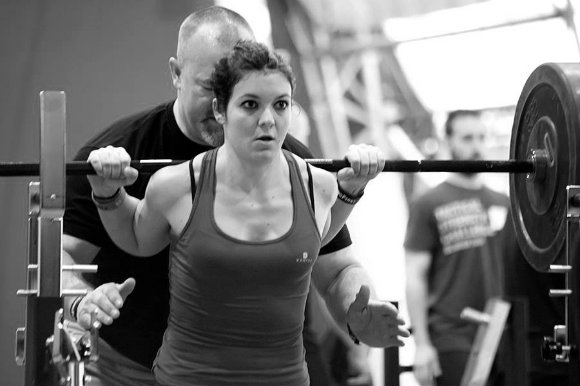
After dispensing the usual small print-type discussion about not having examined him, not knowing his history, etc., we talked about several things that could potentially be causing his issues. After diving more into his issue (excuse the pun), it quickly became apparent that he was not generating enough tension throughout his body prior to commencing the lift. By not utilizing the tension ability of the body properly, he was placing his spine and other joint structures at risk for dysfunction and injury. For the moment, his symptoms were only a dull ache in his lower back.
Hinging, Winking, and Laziness
One of the most common mistakes I see with the back squat or deadlift is neglecting to create the required tension to properly execute the lift. This is most commonly demonstrated by the athlete either hinging with their lumbar spine along with hinging at the hip, instead of hinging solely via the hip joint, or “winking” at you with their buttocks and lower back, causing tremendous stress at the lower lumbar and sacral regions of the spine. (Note: there could be other causes for these issues. A proper assessment/screen will help to uncover these.)
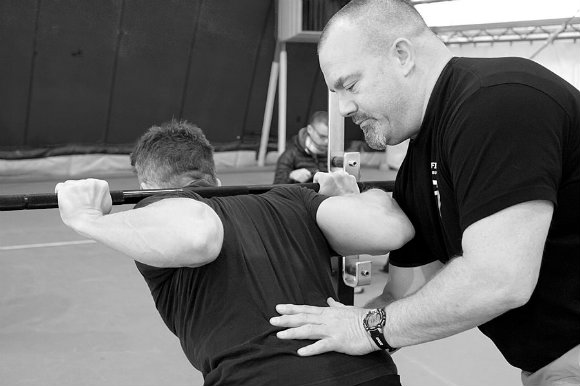
In reference to the “required tension” mentioned above, this is the tension needed to improve your performance but also decrease the chance of injury during loaded movements. The front, sides, back, top, and bottom of the torso are the areas where tension is needed and created. During the back squat and deadlift, a lot of athletes become “anterior chain/core lazy,” meaning they are so concerned about moving the weight, they forget to turn on their anterior components. Some turn on these components naturally, some don’t. For the latter, they need to consciously establish the motor pattern.
Part of the laziness comes from the bar either being on the top of the upper back, as in the back squat, or in the hands of the deadlifter, with their emphasis on the posterior chain activation of hamstrings, glutes, and erectors. Most of the time, this “laziness” will not appear at the start of the back squat or at the top of the deadlift, but on the descent and ascent of the back squat and the ascent of the deadlift.
This is in direct contrast to the Zercher or front squat, which requires the anterior components to be on high alert, otherwise you will lose control of the bar and the lift. With the bar on the back of your shoulders during the back squat, you do not have to work as hard anteriorly if you don’t want to. This scenario can create the aforementioned issues of lumbar hinging and/or “butt winking” to occur during the lift.
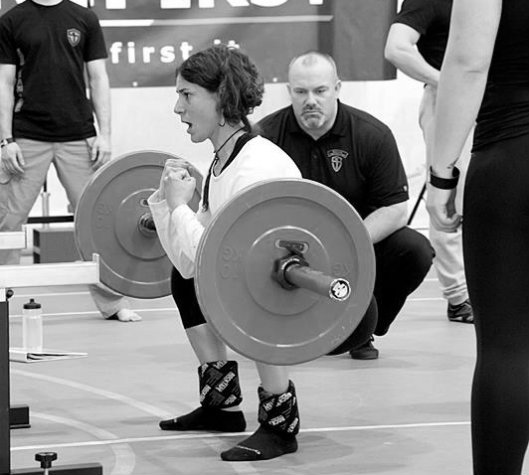
Get Tighter
Once I make the athlete aware of what is going on and explain to them what they are doing and why they need to change it, we get to work on it. As we routinely say at the SFL Certification, don’t be afraid to reduce the weight on the bar to help pattern this new method of creating the correct tension.
Remember, the body and mind revert to training when under stress. If you try to ingrain this new method while loading the body with >80% of your 1RM, you will not be successful. Your body will do what it takes to achieve the task in front of you, even if it means reverting back to its old ways of training. Backing off the weight means letting the ego go for a bit, knowing that in the end, you will become stronger than you were before and in a safer manner.
I am not the first one to state this, but this “regression before progression” is important to get the proper motor pattern hardwired in your cerebral cortex and the rest of the neurological system. Once mastered and proven under a lighter load, then progressing to heavier loads will be prudent, but always being mindful of maintaining the new method. If you feel a breakdown at any point, back off a little, pattern it, and then progress again.
I always remember this quotation from Andy Bolton: “Without tightness, you cannot have strength. All the best lifters get tighter than the average lifters. Simple as that.”
Here are some ways to get tighter than average:
1. The Hard Style and Hartle Planks
To practice the tightness required, especially anteriorly, train the hard style plank. After mastering the hard style plank, you can progress to adding even more tightness with the Hartle plank—you do this by simultaneously pulling your elbows toward your toes and your toes toward your elbows (isometrically). Your pelvis will rise. Cramp the glutes hard and push your pelvis down to bring the body back into a straight line—an action similar to the kettlebell swing. The toes need to be fully extended and the ankles maximally dorsiflexed.
Practicing this will start to “turn on” the anterior components in a horizontal or straight line. This in turn can and will carry over to the trunk flexed/hip flexed positions of the back squat and deadlift, but you need to be mindful to make sure you stay tight anteriorly.
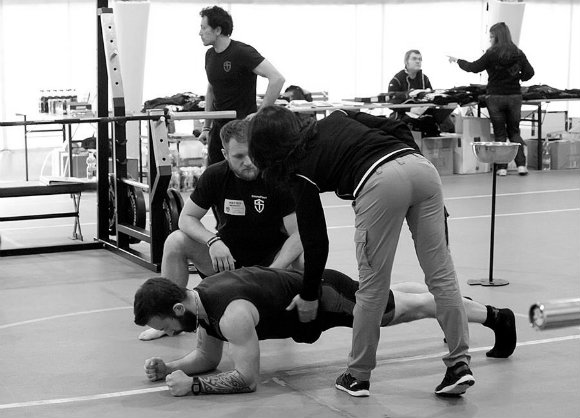
2. Pausing and Facilitating
With no load or a very light load (and sound technique), have a training partner stand to the side of you during the back squat and/or the deadlift. Have them command you to stop at various stages of the eccentric and concentric parts of the back squat and the concentric aspect of the deadlift. You will not know when they will do this. When you are paused, and with your permission ahead of time, your partner will check to make sure you are remaining tight by tapping on your sides and front.
This will help facilitate the appropriate neuromuscular response to contract and create the needed tension. Once you have mastered this practice, start to add load. As stated above, if you start to deviate from being able to keep tension under progressively heavier loads, back off the load slightly, master it, then progress again.
3. The Zercher and Front Squats
Training these squats will also help the anterior components to “turn on.” While not exactly specific to the back squat and the deadlift, training these, along with the plank, will create the synaptic pathways in your cerebrum and cerebellum to generate a greater facilitation and awareness of activating the anterior components. Eventually, after enough practice, this facilitation and activation will be become subconscious and second-nature.
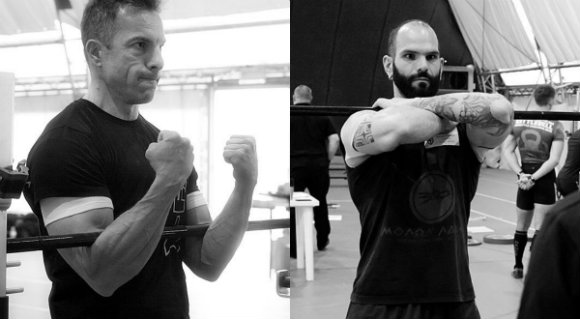
As a side note, utilizing the steps above will also make your bodyweight and kettlebell training better, especially the grind-type moves. Military press, both barbell and kettlebell, will improve. Squats, pull-ups, OAPU and OAOLPU will improve, as well. Even the ballistic moves—swings, cleans, and snatches—will show improvement in performance, specifically at the top positions, and you will lessen the chance of injury overall.
Tension, the neuromusculoskeletal variety, is a beautiful thing when used the correct way. It will help increase your performance and decrease your chance of injury. Learn to use it properly and it will serve you well.
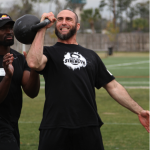

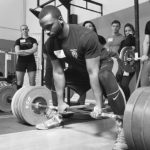


Great article! Thanks
Recently, I look for help to improve my lifting. My coach told me I need to decrease the weight I lift before for learning the movement and *tension*. This article saves me!
One question: Do you recommend any practices to improve *posterior tension*? Thanks
I have used kettballs and taken classes but thank u for great info onZercher squats I will start doing as in somones elses comment better late than nevet!
Zerchers and front squats to train anterior tightness; great idea, doctor! I don’t know if anything causes my abs to tighten up more than front squats.
Since training front squats, I’ve noticed that if I pick up something heavy like an old TV, my abs tighten up, and I almost don’t feel the load in my lower back anymore.
Thank you Dr. Hartle for a good article. I am beginning to realize the importance of it only recently; better late than never as they say.
Abdul,
You are welcome! Thank you for your kind words! A very important principle to say the least!
Great article Doc!
Thank you Cole!
A good article, but I’m disappointed there is no mention of the use of breath. Isn’t that an important component of generating tension before the lift?
Anna,
Yes it is. However, this article was about tension only. Breathing under load will be discussed at a later date. If you are an SFGI or higher, breathing while under tension has already been talked about and demonstrated. Thank you!!
OK, thank you! Looking forward to the next one.
This explains why double bottoms up front squats magically erased butt wink for me. I had always been under the impression that it had to do with flexibility or something, then an SFG had me do those and it was absolutely gone.
jca17,
Exactly! Butt winking can be caused by a multitude of issues. My experience is to utilize what I talk about in the article and if not fixed, a proper assessment should be done to help figure out what else it might be.
Beautiful timing on this article. As my squats have been getting heavier, I’ve been noticing that my tension isn’t where I want it to be when I’m not wearing a belt.
Thank you James! Learn it, apply it, practice it, use it. Good luck!